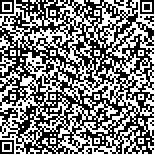Abstract:Geological survey and iron ore exploration were begun quite late in Tibet compared with the work in other parts of China, and therefore the general features in these aspects of Tibet are not yet clearly known. For this reason, the present paper attempts to give some ideas on iron deposits in this "roof of the world". The preliminary work indicates the existence in Tibet of all important types of iron deposits ever found in China. The Anshan type iron deposits, which show distinct stratabound and metamorphic characteristics, are distributed on the northern slope of the Himalayas where Precambrian strata are widespread which imply prospects in mineral exploration. The iron ore, being 41.9% in average iron content, is rather simple in mineral composition with magnetite as the main mineral. The stratabound or terrigenous carbonate-related siderite-hematite deposits are mainly found along the narrow area between the Bangong Lake-Nujiang suture line and the Lancang River subduction zone, with ore cccurrences distributed in groups and zones. Some have been enriched as a result of weathering or hydrothermal metasomatism, as exanlplified by the Kagong iron deposit whose average iron content is as high as 55.59%, which already meets the requirements for blast furnace or open hearth. Preseot predo-minantly on the western side of the Jinsha River subduction zone, the porphyrite iron deposits are in zoned distribution and bear close resemblance to "Ningwu type" iron deposits. The iron deposits occur at the contact zone of amphibole quartz diorite porphyrite, with apatite and magnetite as the major minerals, and grade of enriched iron ore and lean ore (both containing V and Ti) being 53.72% and 28.34% respectively. Skarn iron deposits are ubiquitous in this area. The skarn type iron or iron-bearing polymetallic deposits, mostly of medium or small size, are frequently observed at the contacts between intermediate-acid intrusive body and carbonate rocks. The Cr-, Ni- and Co-bearing magnetite deposits, though not of large size, are also seen at the contact zone of ultrabasic rocks. It is worth noticing that there exist fairly large-sized weathering-leaching type gossans over the copper sulfide orebodies at the contact zone of prophyry copper deposits. In addition to the common features of gossans, they possess copper and precious metals, which even reach industrial requirements. The delafossite, rarely seen in other areas, forms orebodies in this area. To conclude, it is reasonably conceivable that iron deposits, including rich ore, are of great potential in Tibet.
文章编号:
中图分类号:
文献标志码:
引用文本:
万子益.1986.西藏主要铁矿类型地质特征简介[J].矿床地质,5(4):23~33.1986.A Brief Introduction To The Major Types Of Iron Deposits In Tibet And Their Geological Setting[J].Mineral Deposits5(4):23~33
图/表

